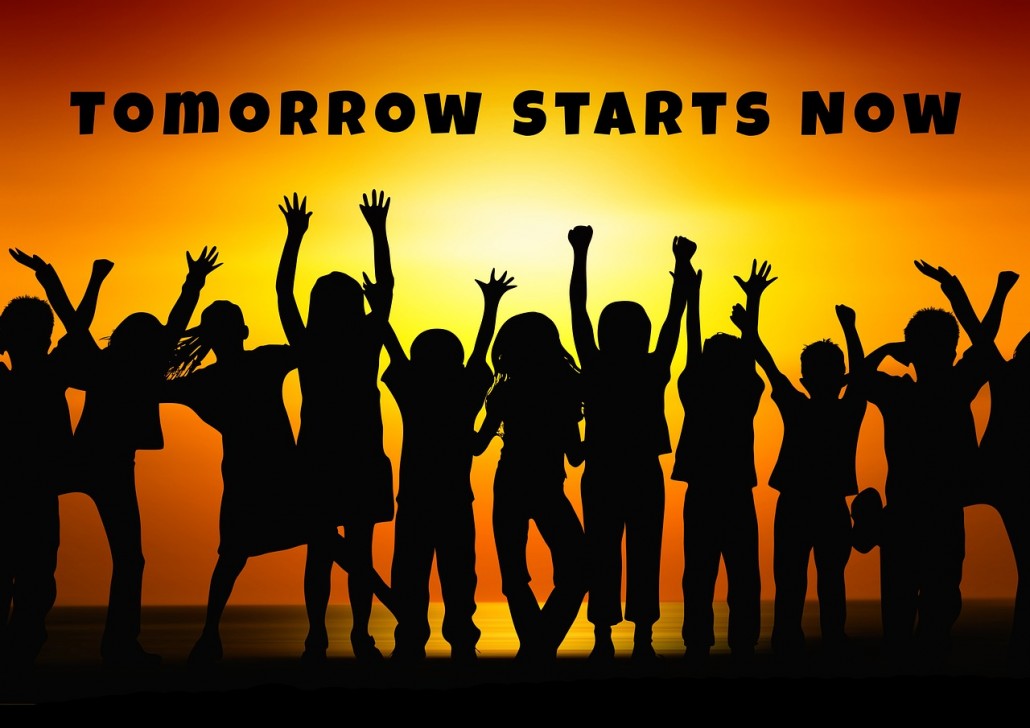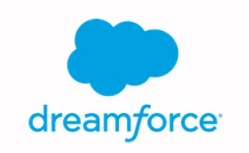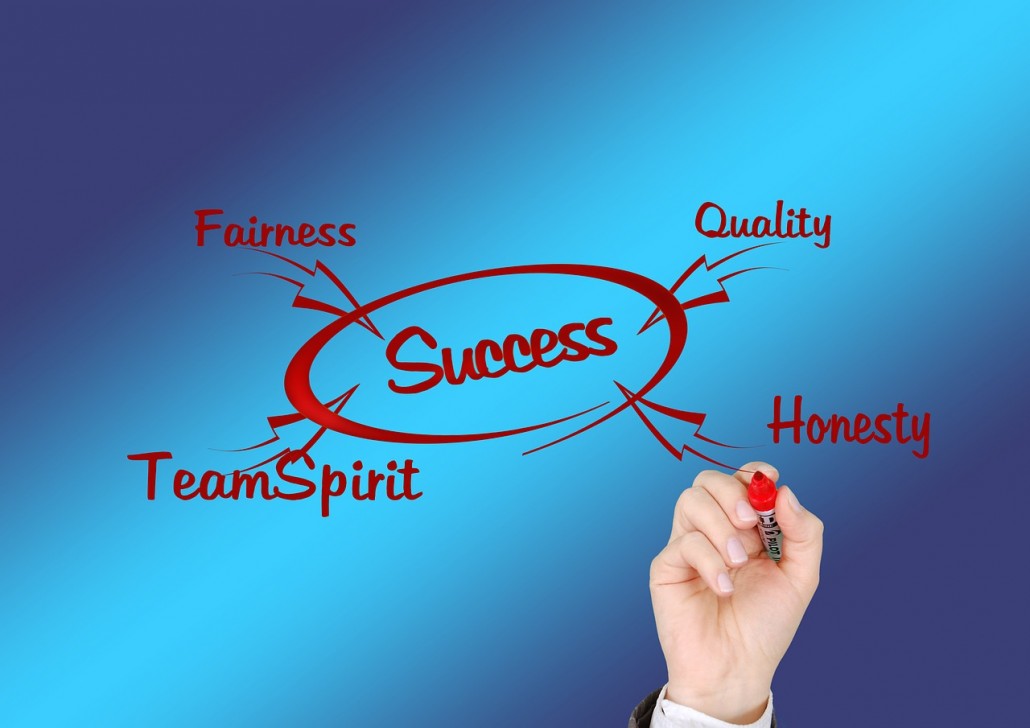
Imagine it’s 2025, downtown San Francisco is pulsating with large inflatable structures that seem to grow from the ground. Customers have had their ‘revolution’ and the Internet of things is no longer an idea–there is now a platform for “listening and acting on information from connected devices by creating a workflow around not only identifying the anomaly within a device, but also figuring out what to do with the anomaly.” Developers can now deploy to a range of social, mobile, and connected devices. Platform services include 10X more API functionality then one ever thought possible. Developers can build customer apps, wearable apps, product apps, whatever apps they want in a scalable flexible platform. It is now the era of the “Internet of Customers.”
But proliferation of global and social business web information has made accurate insight into the business an intractable problem because companies and markets change every day. Robots, that were supposed to assist humans in everyday tasks, are still not a reality.
But wait, it is not 2025 but 2013, and Dreamforce is happening, and while salesforce.com has managed to crack many of the items listed above, all but for the last two- and that is where their partner, FirstRain comes into play…
So after you see the amazing inflatable structure and listen to the Salesforce 1 annoucement, come by booth #N1924 to see how FirstRain delivers into the salesforce platform real-time analytics for true business insights. All while visiting with Chassis the Drinking Serving Robot- because everyday tasks like pouring a drink should by now be fully controlled by a robot, no?
Stop by, get a picture with Chassis, and have a drink on FirstRain.
Moscone North Booth #N1924, Expo Hours:
Monday 12pm-8pm (Possible Dance-off with @TooSaasy during opening reception 6-8pm?? No Twerking allowed!)
Tuesday 2pm-5pm
Wednesday 9am-5pm
Thursday 9am – 2pm

We’ve made a big fuss about what we’ve got going on at Dreamforce. But one thing that hasn’t gotten a whole lot of airtime is the Table Talk that our intrepid COO, YY Lee, is running on Tuesday. And we think it’s really interesting!
YY will lead a discussion about how enterprise mobility and BYOD have dramatically shifted the work-life landscape, giving enterprises an incredible opportunity to take advantage of how connected people are. With the amount of personal time people spend time on their smartphones and tablets, however, enterprises need to think about how they fit into the multitasking employee’s mobile world.
The discussion will cover the opportunities that the constantly connected environment presents to enterprises. She’ll address the differences between enterprise and consumer apps, what enterprise apps can learn from the consumer world and how to reconcile the two spaces to turn BYOD and multitasking into revenue for your company.
This topic is even more relevant now with the release of Salesforce One! So swing by her table to learn a thing or two about how to make a kick-ass enterprise mobile app.
Become a Mobile Hero: How to Turn BYOD and Multitasking into Revenue
Tuesday, Nov. 19
Yerba Buena Garden, Main Tent, Table 8
11:30-1:20 pm

Step into Your Customer’s Reality with FirstRain
FirstRain is ready and excited for Dreamforce—and we want to see you there! We’re doing a lot from Sunday to Thursday, so take a look below to see everything we’ve got going on… then follow us @FirstRain!
Booth hours are:
Monday 12:00pm – 8:00pm
Tuesday 2:00pm – 5:00pm
Wednesday 9:00am – 5:00pm
Thursday 9:00am – 2:00pm
Our booth is going to be our home base, and we’ve got some great activities going on constantly. Swing by Booth N1924 to:
Want more? We’re hosting some great sessions and talks at Dreamforce this year. Come see how our customers changed their sales and marketing game:
Women in Technology Table Talk: Achieving Effective Communication
Time & Location: Monday, Nov. 18th: 10:30–11:00 AM | Moscone Center West, Women in Technology Salon
How can women take a seat at the table with other developers and make sure their ideas are heard? Join us at the Women in Technology Salon for an informal talk, featuring Penny Herscher from FirstRain and Lori Williams from Appirio, on how to get your message across with confidence and persuasion.
Changing Sales: How Enterprise Sales Use Customer Insights To Drive Sales Growth
Time & Location: Monday, Nov. 18th: 3:00-3:30 PM | San Francisco Marriott Marquis, Foothill G1 + G2
Arming your sales team with insights and analytics within salesforce.com that actually drive growth and improve sales productivity is one of the biggest challenges most enterprises face—but is essential for positive ROI. Join FirstRain CEO Penny Herscher and Quality Technology Services’ VP Sales Operations Chris Oberkfell as they discuss how QTS is addressing this challenge.
Become a Mobile Hero: How to Turn BYOD and Multitasking into Revenue
Time & Location: Tuesday, Nov. 19th: 11:30 AM-1:30 PM | Yerba Buena Garden, Main Tent, Table 8
Enterprise mobility and BYOD have dramatically shifted the work-life landscape, giving enterprises an incredible opportunity to take advantage of how connected people are. With the amount of personal time people spend time on their smartphones and tablets, however, enterprises need to think about how they fit into the multitasking employee’s mobile world.
YY Lee, COO of FirstRain, will lead a discussion about the opportunities that the constantly connected environment presents to enterprises. She’ll address the differences between enterprise and consumer apps, what enterprise apps can learn from the consumer world and how to reconcile the two spaces to turn BYOD and multitasking into revenue for your company.
New Reality: How Big Data Insights Help Cisco Stay on Top of Its Marketing Game
Time & Location: Palace Hotel, Presidio | Wednesday, Nov. 20th: 10:30-11:00 AM
Empowering strategic marketers to take action in a changing market is challenging, especially in today’s post-recession economy—but to compete, it’s essential. Join us as Cisco’s Charlie Treadwell and Zunesis’ Evan Escobedo discuss with FirstRain CEO Penny Herscher how Cisco uses a revolutionary market insights solution to develop and implement their go-to-market strategy.
We’d also love to meet with you. Schedule some time now!

By Ryan Warren, Vice President of Market Development
Understanding your customers has never been more important than it is today. Customers have greater access to information than ever before, which means they have more choices and it’s more challenging to build long-lasting loyalty. But companies need to do this to retain clients long term and generate more revenue. Being customer-focused has its benefits for you as well.
Customer-centricity has four main requirements: recognizing and understanding the differences between each of your customers, realizing the quantifiable value in each individual client, learning who your high-value clients are and how to retain them and utilizing customer data to create a highly personalized experience. Although every person in your organization is responsible for improving customer centricity, your sales representatives need to establish themselves as strategic consultants who play a vital role in your customers’ businesses.
Moving Past “Sales” to Be Seen as an Essential Partner
Sales professionals are usually extroverted and are great at closing deals. But what happens after the sale? Are your reps continuing to check in with clients, or is their contact information just sitting in your CRM? Customer-centric organizations know how to move past the strictly sales mentality to form lasting relationships with their clients. These reps aren’t just people who sell new products and services—they’re viewed as critical business partners who can advise and direct. But your team can’t accomplish this without actionable information.
“A successful salesperson knows how to strike a balance between the science of being a salesperson and the art to match their customer needs,” said Nima Niakan, FirstRain Fellow.
He added that FirstRain can help organizations embrace different methodologies, such as TAS and Challenger, to ensure any information that comes into the organization is analyzed and directed to the right sales rep—the most relevant information in the right platform, categorized under a particular selection based on the methodology. This allows the salesperson to quickly take action on this information.
“FirstRain ups the game for the sales rep and helps them be more efficient with that ‘science’ side of the equation,” Niakan stated.
Bridging the Gap Between Salespeople and Strategic Consultants
While actionable science may seem like a lofty goal to some, companies can’t become more customer-oriented without the right data. So how can salespeople transform their enterprise relationships into more of a partnership?
“By understanding their customers’ ecosystem, knowing what legislative, regulatory and macroeconomic issues are facing their customer and working backwards from there to see how to positions and time the deal to assure it matches the customer’s priorities,” Niakan said.
It can be challenging to establish this type of relationship with your customers, but it pays off in the long run. Being viewed as an essential consultant has benefits in the sales process after the relationship has been developed.
“Once the customer thinks of you as a key partner, now they will come to your first, before looking to a competitor of yours,” he added.
After this trusted status has been gained, the rep can leverage his or her knowledge of the customer to direct clients toward the company’s solutions. This allows customers to get where they want faster, more efficiently and have a desired impact by utilizing your products and solutions.
“The relationship will open a channel for the customer to ask for new features and products that put you in the lead and help you get more ingrained inside the customer’s organization,” Niakan stated.

By Ryan Warren, Vice President of Market Development
In sales, there’s been a lot of hype about the importance of knowing your customers. While it’s easy to talk about, the truth of the matter is companies are struggling to gain insights into their clients’ realities. Although there are a number of tools available to help make sense of all the disparate data sources out there, many sales teams are still getting bogged down with complexity, and that can negatively impact sales productivity. With disrupters entering the market more frequently, businesses need to know their customers and their customers’ market conditions. While this sounds like a daunting task, making processes simpler can improve revenue gains and customer relationships. When you focus on customers, it’s easier to design processes with them in mind.
Stop Using Complexity as an Excuse
New sales methodologies crop up all the time, and it’s pretty clear that some organizations are agile enough to adapt. Despite this, firms need to put customers first. But if companies hide behind the excuse of tricky market conditions, difficult-to-know customers or internal operations, a competitor can easily enter the market and snatch business away, according to an article by Dave Brock for Salesforce. Many organizations default to doing the things the same way they always have.
In fact, organizational complexity can make it harder to solve problems because sales teams or other departments are trying to approach them the wrong way. Some companies have a set way of approaching issues and are afraid to diverge, even when there’s a new opportunity. Brock noted startups are often better at solving problems and addressing clients’ needs because they aren’t stuck in the same rut of taking an established route. Startups don’t necessarily experience less complexity, but they don’t rely on the same approaches all the time.
Simplifying sales methods, processes and organizational attitudes isn’t always an easy task. Past habits and beliefs can prevent team members from seeing the big picture and maximizing productivity. But if your sales reps are spending more time arguing in internal meetings than serving customers, something needs to change. You need to consider things from your customers’ perspectives to make adjustments.
Putting Your Customers—Not Your Pitches—First Will Improve Sales
They say you catch more flies with honey, and your sales team may land more deals by catering to customers’ needs and preferences, rather than having a pitch ready at all times. Although your reps should absolutely know your product or service offerings back and forth, this shouldn’t be the information they lead with. If you want to boost sales, you should address customers first. Talk about them—their companies, their markets—and ask questions rather than just speak, Tom Searcy wrote for Inc. magazine.
In the past, salespeople would go to meetings and talk about why their products were the best, but now your team needs to be more subtle. Don’t be caught selling. Your team can be a lot more successful by focusing on issues related to your clients’ businesses. You can then offer insights into these problems by placing the emphasis on the context of the business, rather than the context of products you are trying to tell. Reps that take this approach wait to be asked to solve the problem. They do not push their own solutions. But expressing this concern about customer pain points helps establish a deeper sense of trust. These salespeople transform themselves into strategic partners and advisors instead of just a contact after the sale.
Market Insight Is Key
Without a firm knowledge of the conditions, competitors and geopolitical events in a customer’s market, your team can’t deliver this kind of service to clients or prospects. Although your customers are more informed about their options, you need to know what they are facing to meet them on their own terms and sell without selling.

As Dreamforce approaches (it’s November, and that means there are only 17 days left!), we’ve finalized our booth design, have finally all agreed on what we’re going to wear, and have our giveaways ready to go. We’re preparing for a GREAT show.
What we’re most excited about, though, are our breakout sessions. This year, we have two—one with Cisco’s Charlie Treadwell and Evan Escobedo, and the other with QTS’s Chris Oberkfell. They’ll discuss how big data insights are helping their sales and marketing teams drive growth.
Charlie and Evan will be talking about how Cisco is using FirstRain’s Market Insights to develop and implement their go-to-market strategy. They’ll discuss some of the challenges their organization faced, the goal it’s trying to achieve, as well as the characteristics that were important to them when they were trying to find a solution.
Chris, on the other hand, will be speaking to Customer Insights, and how it’s helped his entire sales organization replicate the behaviors of the top salespeople—and why having deep insight into your customer’s business is essential to compete in a fast-moving, constantly changing market.
We hope to see you there! To get more information on our sessions, click here. You can also enter to win a Fitbit Flex!
So, what are you waiting for?

By Nora Weintraub
You’re most likely aware you can’t go after a huge target market if you want to create successful advertising strategies. But many companies have trouble segmenting their customer base and generating separate marketing materials for each buyer persona they want to pursue. How can you create more relevant and targeted campaigns? By using customer intelligence, your marketing team can effectively segment your customers and have better knowledge of current and prospective clients.
Especially for B2B organizations, persona-based marketing is critical because many different players are involved in the decision-making process. B2B products often apply to very specific niche markets, so there’s no sense in trying to attract everyone. You need to get the most relevant customers interested in your products or services.
Why Do You Need Personas?
Most would-be customers encounter completely generic content when they research new products. Personas are virtual characters and represent a segment of customers with particular demographics, industries or roles within a company. Knowing your customers can help improve marketing, sales and even product development operations, according to an article by Mike Telem in Business 2 Community. You can more accurately define your ideal prospects and discover what really matters to them, helping you create more effective and engaging content.
B2B purchases typically involve a number of people within an organization, and each of these people will have different concerns. Financial executives won’t have the same considerations for new software as IT managers. And the end users of the product will have different concerns. Without targeting based on buyer personas, your marketing team may not be generating the right amount of leads, and the sales team may not be able to achieve significant revenue gains.
Start Using Personas and Get Better Results
Simply personalizing content isn’t enough, Patrick Spenner wrote in Forbes. While personalization can help companies target individuals, it doesn’t give B2B buying much of a boost when four or five people are involved. The more people in the buying group, the less likely you are to effectively engage all of them with the same kind of content.
In addition to needing more people to decide on a solution, people aren’t going to buy something immediately after discovering your product, according to Irakli Beselidze in a separate post for Business 2 Community. B2B buying cycles can last for years. The consequences of making the wrong decision can be disastrous, so buyers take their time and weigh their options. And even after you make the sale, you want to keep in contact with previous customers for when they need to upgrade in the future. This means you need to create content that targets multiple people, not just the executives with the decision-making power.
Some organizations wait for their audience to give clues to who the decision-makers and key influencers are. But companies need to stop doing this and start focusing on buyer personas to generate more effective campaigns. Rather than just launching content and hoping it provides value to someone in the buying cycle, you need to start studying buyer personas through customer analytics. Watch customer behavior while they are going through the different phases of the sales cycle. Since your customers are increasingly growing more knowledgeable and tech-savvy, you need to convert big data analytics into actionable insight. It can help you more effectively reach all the different people involved in the B2B decision-making process.

By Ryan Warren, Vice President of Marketing
In today’s world of the empowered customer, it’s no longer an option to just tell people your organization is customer-centric. Your sales reps need to uphold this promise by tailoring their approaches to each prospect or client they meet, and this holds especially true for high-powered executive buyers. If your team is failing to cater to this particular group, your organization could lose business in the blink of an eye. Knowing your customers and meeting their specific needs has never been more important.
In fact, Mark Lindwall of Forrester quoted his colleague, David Cooperstein, in his blog, stating, “It’s no longer sufficient to say that you are simply ‘customer-centric’ or ‘customer-focused.’ The only successful strategy in the age of the customer is to become customer-obsessed—to focus your strategic decisions first and foremost on how your customers expect you to engage them.”
Failing to do so is a critical mistake for your organization. Customers have higher expectations than ever before and if your sales team isn’t meeting its clients on level ground, it can miss the chance to strengthen the relationship.
Are Salespeople Missing the Mark with Executive Buyers?
Your sales reps may leave every meeting feeling like they nailed the pitch, but there’s a good chance this isn’t the case. Forrester surveyed a number of executive buyers, and less than 40 percent said meetings with their representatives fulfill their expectations. Lindwall also noted that only 25 percent of salespeople even have access to executive buyers, which means there are limited possibilities for face-to-face meetings. This gap can cripple sales productivity.
Although companies are funneling money into sales onboarding, training and extra development, the missing crucial element could be empathy. Executives want salespeople to express genuine concern and understanding, and if they don’t, your team is losing opportunities by being out of sync.
Even though customers can empower themselves to make informed decisions, sales reps need to be able to walk in the shoes of their customers to be able to maximize every opportunity. You need to understand how each customer perceives value, risk and cost. At the end of the day, executives aren’t really interested in products—they want something that will solve their companies’ pain points. If your sales representatives go to meetings just to discuss key product features, they probably aren’t talking about the things that are truly important to the client and they may miss the deal.
How to Become Customer-obsessed
In two separate blogs for Salesforce, Alice Myerhoff and Matthew Cavnar listed the following tips for getting personal with customers:
1. Use Your CRM Correctly
The more information reps have when they enter the meeting, the more likely they are to deliver the experience the client wants. A simple step like ensuring CRM information is always up to date can make a big difference.
2. Be Responsive, But Keep It Short
Although customer-centricity involves more than just being there when customers need you, your sales reps can’t leave clients hanging. If they can’t respond right away, a short note detailing when they will get in touch can help build trust with executive buyers. However, if you’re getting in touch with these people on your terms, don’t ramble. Voicemails and emails should be short and to the point.
3. Represent Yourself as the Product
Since executives are more interested in problem-solving than products themselves, your salespeople need to create a positive association in the client’s mind. The executive may end up continuing the relationship with the rep for years, so it needs to start by meeting and exceeding expectations.

We recently did a post on good bars for dates with clients. However, we’re hoping that you out-of-towners will have some time to visit the amazing city itself. I’m a born-and-raised San Franciscan, so I’m a little biased; however, I still think it’s the best city in the world (and I’ve lived on the East Coast and abroad—that’s why I came back for good!). Here are my picks for things you must see.
When discussing San Francisco, it’s easiest to talk about the neighborhoods. I like to say that San Francisco isn’t a city with a lot of attractions, per se, but it’s a great place to explore. Of course, it’s got its sights to see (think the Golden Gate Bridge, Alcatraz and Lombard St.), but the real character is in its extremely varied—and very colorful—neighborhoods. That being said, take some time to sit and people-watch; you won’t be disappointed.
Word to the wise: It’s California, but it’s COLD! San Francisco is known for its fog, and that’s no joke. When planning what to bring with you, think 55 and foggy. Seriously. Layers are your friend.
My first choice for tourists would be North Beach, the Italian quarter. It’s one of the oldest neighborhoods in the city, and is chock-full of delicious restaurants and historic bars (check out Vesuvio—an amazing saloon located next to the famous City Lights bookstore).
As a post-dinner activity, I would also HIGHLY recommend getting tickets for Beach Blanket Babylon. It’s the longest-running musical show in America, and is constantly changing based on current events. It’s an incredible atmosphere, the costumes are outrageous—it’s one-of-a-kind and should NOT be missed if you can help it.
Columbus St. is North Beach’s main drag, and runs all the way from Fisherman’s Wharf to the Financial District. You can start at either end and get an equally good feeling for the neighborhood. Lombard St. (“the crookedest street in the world”) and Coit Tower (atop Telegraph Hill) are within walking distance—but they’re in opposite directions.
Next up is Haight-Ashbury. The home in the 60s to the hippie/counterculture movement, it is STILL the home to the hippie/counterculture movement. There aren’t any attractions, but it’s a great place to wander, again with awesome food and bars (one of my favorite spots in the whole city is here: Magnolia Gastropub). The street is full of secondhand clothing stores and smoke shops, and you can still see lots of tie-dye. The original Amoeba Records store sits at one end, and you can also see the home of Jerry Garcia.
It’s a little bit of a hike from SOMA or the Embarcadero, but well worth it. It’s also situated right next to Golden Gate Park, which is just fabulous.
I would also encourage you to check out Chinatown (always interesting, and the biggest one outside of Asia); The Castro (even if you’re straight, the vibe is really fun—and quintessentially San Francisco); and The Mission (my old stomping grounds and a neighborhood that is decidedly non-touristy. Valencia St., Dolores Park and the world-famous Bi-Rite Ice Creamery).
One last note about the Fisherman’s Wharf area: I honestly think it’s one big tourist trap. However, I wrote this blog posts for tourists, so I will give it a mention. Things that are actually worthwhile to see and do there are: eating chowder in a bread bowl in Fisherman’s Wharf (ok, truth be told, there’s no better place to get seafood in the city); watching the sea lions on Pier 39 (but avoid the rest of Pier 39—it really is purely a tourist trap); getting chocolate at Ghirardelli Square (delicious!).
Have fun exploring the City by the Bay!

Dreamforce brings together salesforce.com users and partner companies from around the world. You’ll meet a ton of great people, be exposed to solutions you never knew existed, and hopefully be able to apply all of that knowledge when you get back to work after the show. But how can Salesforce help you while you’re at Dreamforce?
You can get trained—or certified—on salesforce.com at Dreamforce
You can take one- or two-day, in-depth salesforce.com training classes from the experts (and who better to train you than Salesforce employees?). Class topics range from an introduction to salesforce.com, to moving to the sales cloud, to Apex programming for non-developers.
Also, check out the Campground for the latest and greatest from Salesforce, as well as the best ways to sell, service, market, innovate and succeed.
You can also get salesforce.com certified while at the show! They have 7 certificates to choose from. exams will take place on Monday, November 18, 2013, at the Hilton Union Square.
Click here for more information on how to get trained and certified!
Learn Best Practices
There will be a number of sessions at Dreamforce about best practices on the implementation of salesforce.com for your business—and how you can use it to solve a whole host of problems. For example:
Discover New Apps for your Business
Besides using the #AppThat hashtag to put your app (pipe)dreams out there, someone might have already addressed some (or all) of them! Wander around the Cloud Expo and the AppExchange Partner Zone and learn about what’s available (like FirstRain’s business insight solutions! Booth N1924).
After the Show
You’ve met more people in 5 days than you have in the last quarter. You’ve learned a lot. Now go home and put what you know into action. Upload all those contacts, send out some emails, purchase and implement that product you decided you really need—and get selling!
